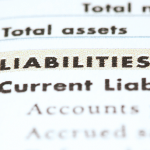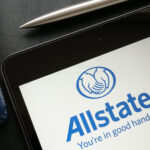Just as a month-long stock market rout seems to have further trashed the concept of a “Great Rotation” from bonds into equities, evidence is emerging that institutional investors may have already begun such a shift.
A strategic re-allocation back to higher-return stocks from safe-haven but low-yielding bonds has been touted as one of the biggest investment themes of 2013.
That theory has been doubly challenged – by the stocks sell-off since the Federal Reserve raised the question of how long it can keep its cash taps open, and by the lack of hard evidence of a shift out of bonds.
Until now, the available data showed the flows driving stocks have come out of money markets, not fixed income.
So the latest data from the Fed offers probably the first significant evidence that a meaningful bonds-to-stocks shift at least began in the first quarter among U.S. pension funds.
The Fed data showed U.S. pension funds and insurance companies bought $13 billion of equities and sold $10 billion of bonds overall in a move driven by private pension funds.
While this switch may be small, it helped boost the equity weightings of U.S. pension funds and insurance companies – a $25 trillion industry – to 45 percent at the end of the first quarter, the highest level since 2007, according to JP Morgan.
This suggests that a secular switch back to equities among investors such as pension funds may have been supporting the asset class through the reappraisal of Fed policy intentions.
“People are realizing the value equities are bringing relative to bonds right now – you see that in equity risk premium or in earnings yields,” said Grant Bowers, portfolio manager at Franklin Equity Group.
“Great rotation is something that is going to play out in the next 5-10 years. It’s not something that is going to play out overnight. It’s going to be a slow tailwind behind equity markets. There’s a lot of buying power on the sidelines.”
Even after the shakeout in stocks, this year’s total return in equities still far outpaces that of other asset classes.
Compared with an 8 percent gain in the MSCI All-Country equity index, benchmark U.S. Treasuries lost 2.2 percent and corporate bonds fell 1 percent.
Equity risk premium – which measures how much investors are being compensated for buying equities over risk-free government securities – stands at around 6-7 percent for U.S. stocks, nearly double the 110-year average, according to Credit Suisse.
Data from Bank of America Merrill Lynch shows bond funds had an outflow of $14.5 billion in the week ending Wednesday, the second largest on record. Less money flew out of equity funds, at $8.5 billion.
Pension funds and insurers are making an important shift in strategy after they spent five years offloading equities to reduce risks highlighted by the global financial crisis.
As they increased safe but low-yielding bonds, their funding holes grew wider and they are under pressure to plug the gap with stocks that offer the prospect of higher returns.
JAPAN MOVE
Moves by some of the world’s biggest institutional investors add weight to the talk of an institutional move out of bonds.
Norway’s sovereign wealth fund, which has always been a strong buyer of stocks, has 62.4 percent of its portfolio in equity holdings, near a record high, while its bond weighting had fallen to a record low of 36.7 percent as of end-March.
Japan’s public pension fund (GPIF), the world’s largest with a pool of $1.1 trillion, announced last week it is increasing its Japanese stocks allocation to 12 percent of its portfolio from 11 percent, while lowering its weighting in domestic government debt to 60 percent from 67 percent.
This may be only the beginning. For GPIF to eventually have the bond-weighting of Norway, it would have to pull 27 trillion yen ($272 billion) from the Japanese government bond market.
That would be more than half the amount of additional JGBs that the Bank of Japan has pledged to buy this year under its stimulus programme.
At the same time, GPIF would have to invest another 45 trillion yen ($454 billion) in equities to match the portfolio of international peers such as Norway.
“In the institutional world, we would concur there are tentative signs,” said Alan Higgins, chief investment officer at private bank Coutts. “Equities are under-owned at institutions. They are rebuilding. You are likely to see more of this over time.”





















 Cyber Threats, Climate and Business Interruption Risks Top Insurance Buyers/Sellers Concerns
Cyber Threats, Climate and Business Interruption Risks Top Insurance Buyers/Sellers Concerns  Swiss Re Execs Sleeping Well After $2.4B Q3 Reserve Boost
Swiss Re Execs Sleeping Well After $2.4B Q3 Reserve Boost  Allstate October Catastrophe Losses of $286M Include Milton, Helene
Allstate October Catastrophe Losses of $286M Include Milton, Helene  When the Boss Doesn’t Want to Hear About Your Stress
When the Boss Doesn’t Want to Hear About Your Stress 